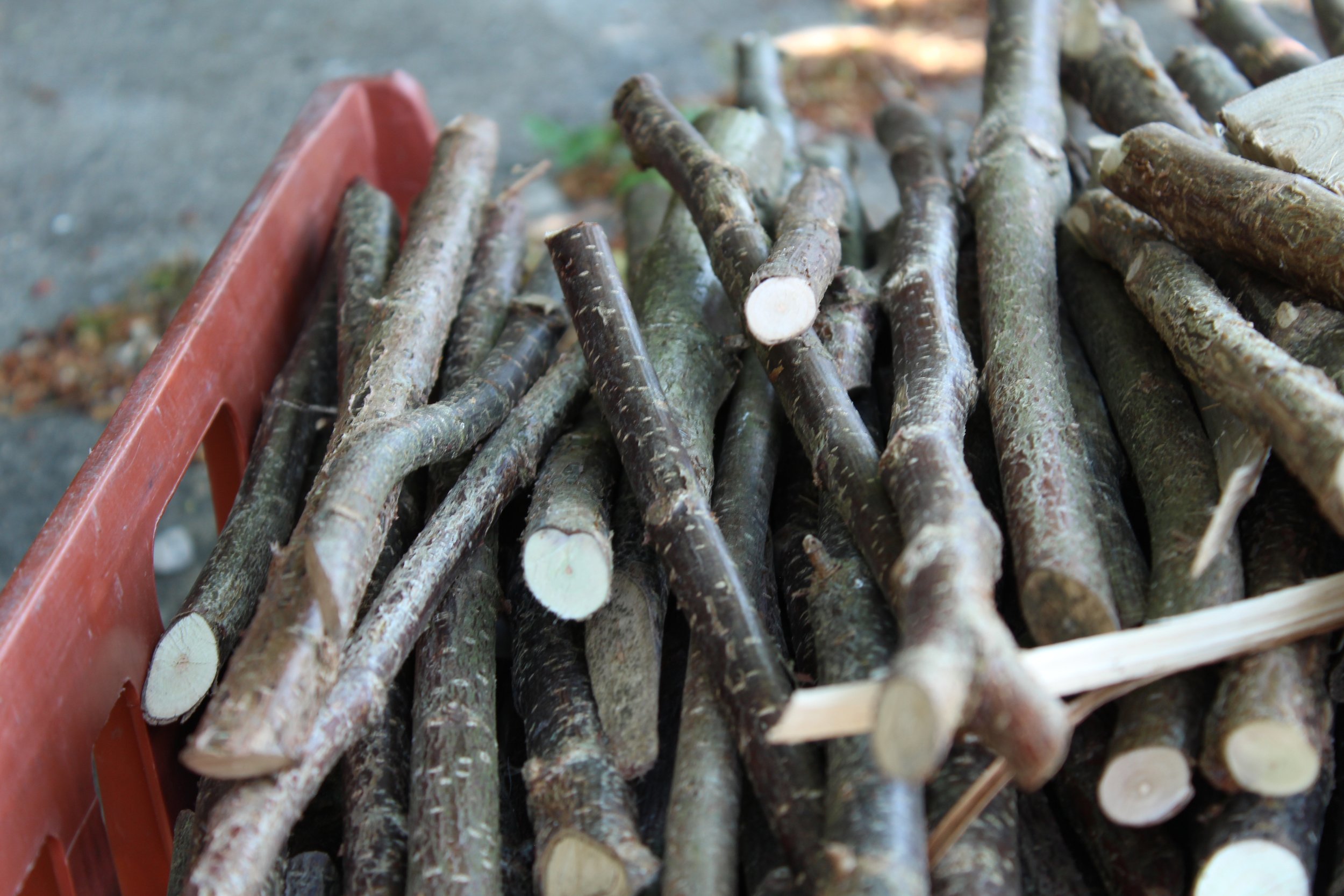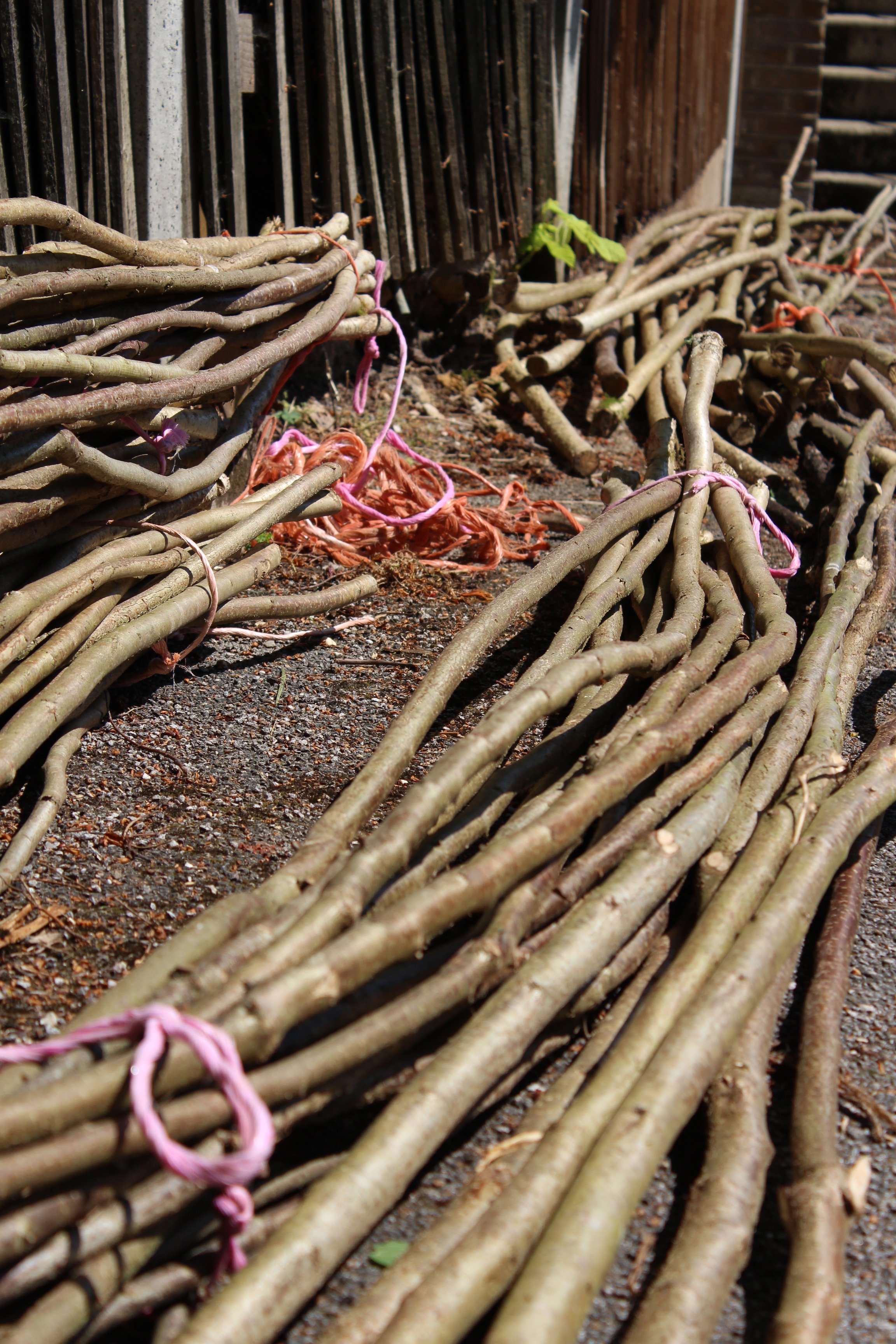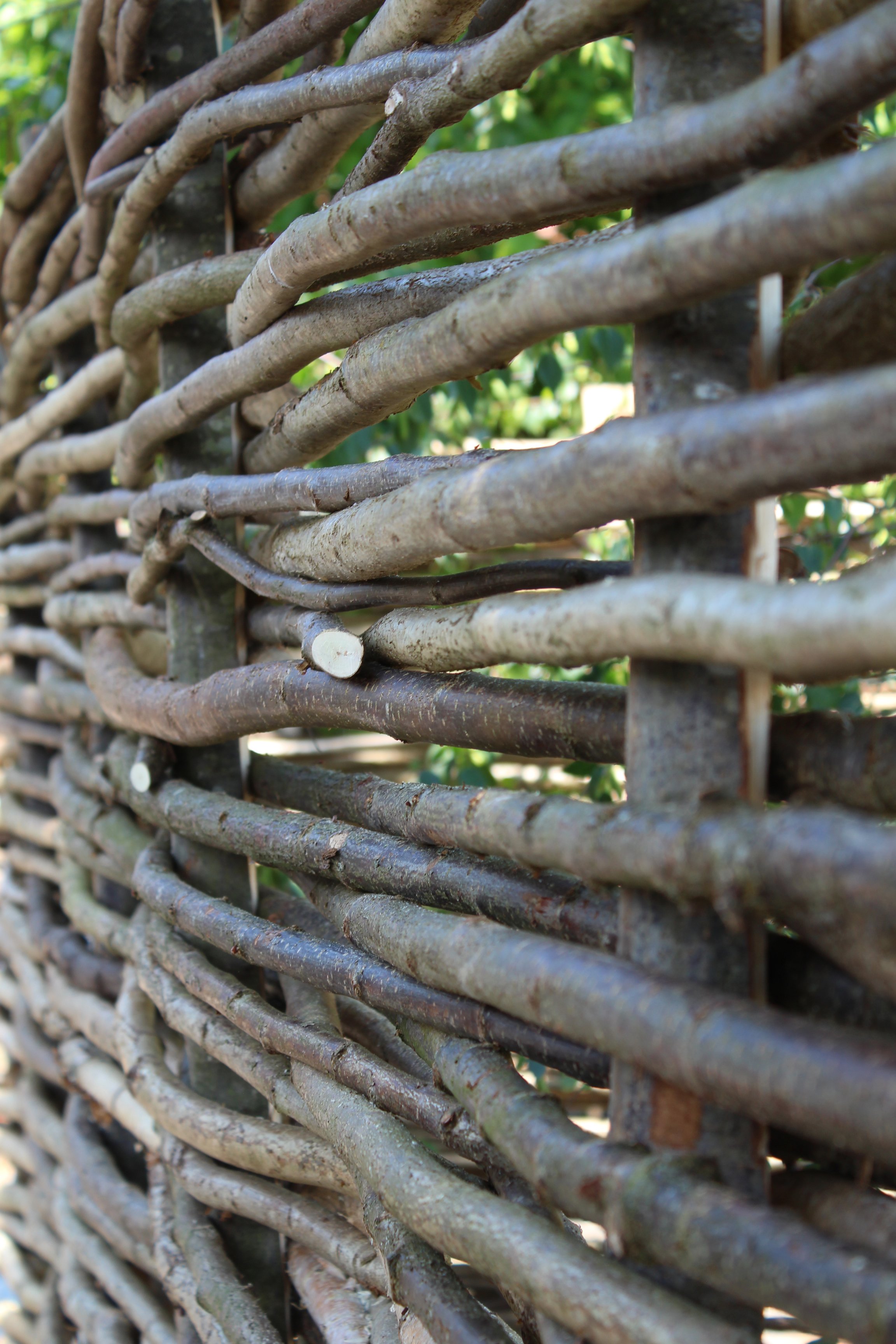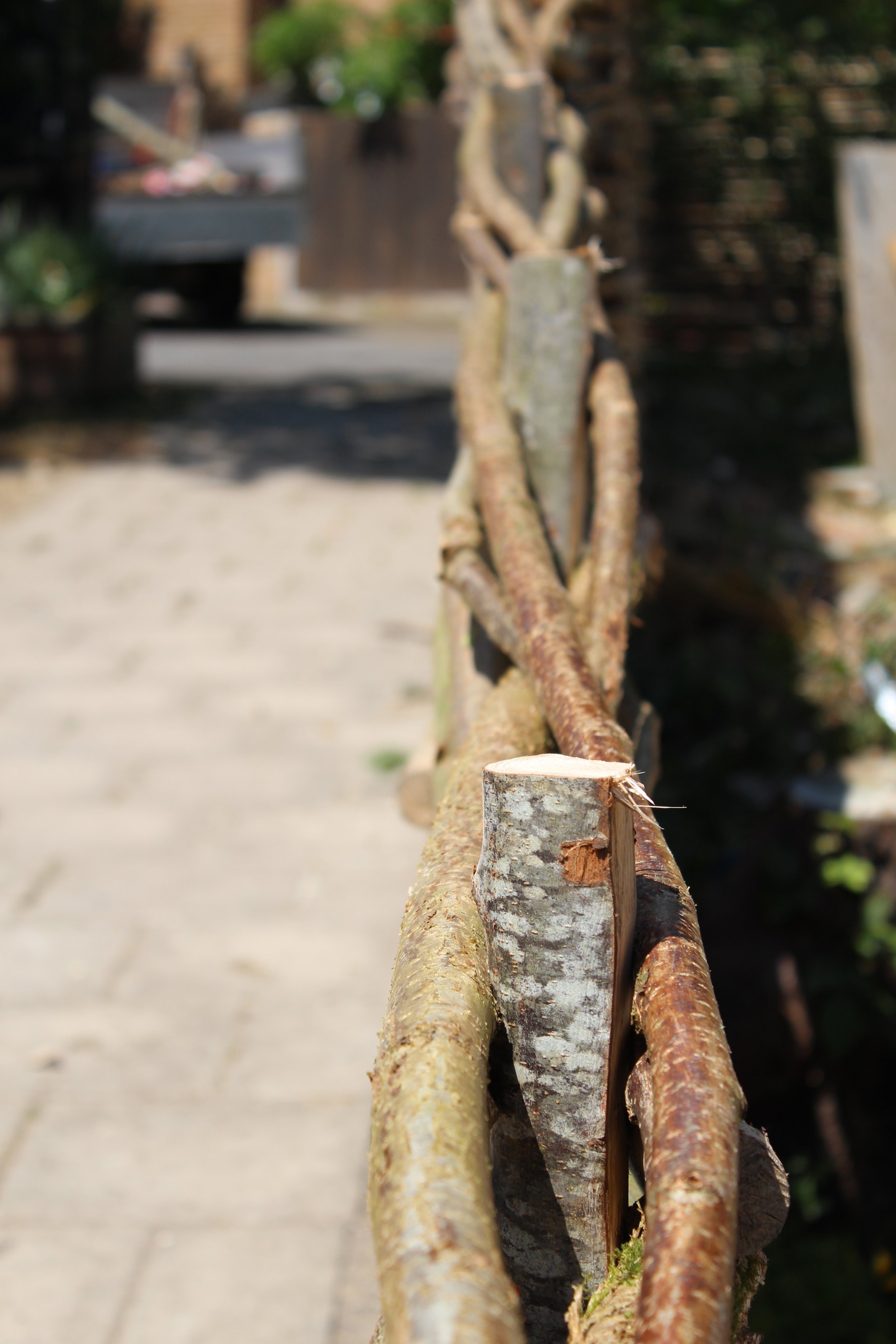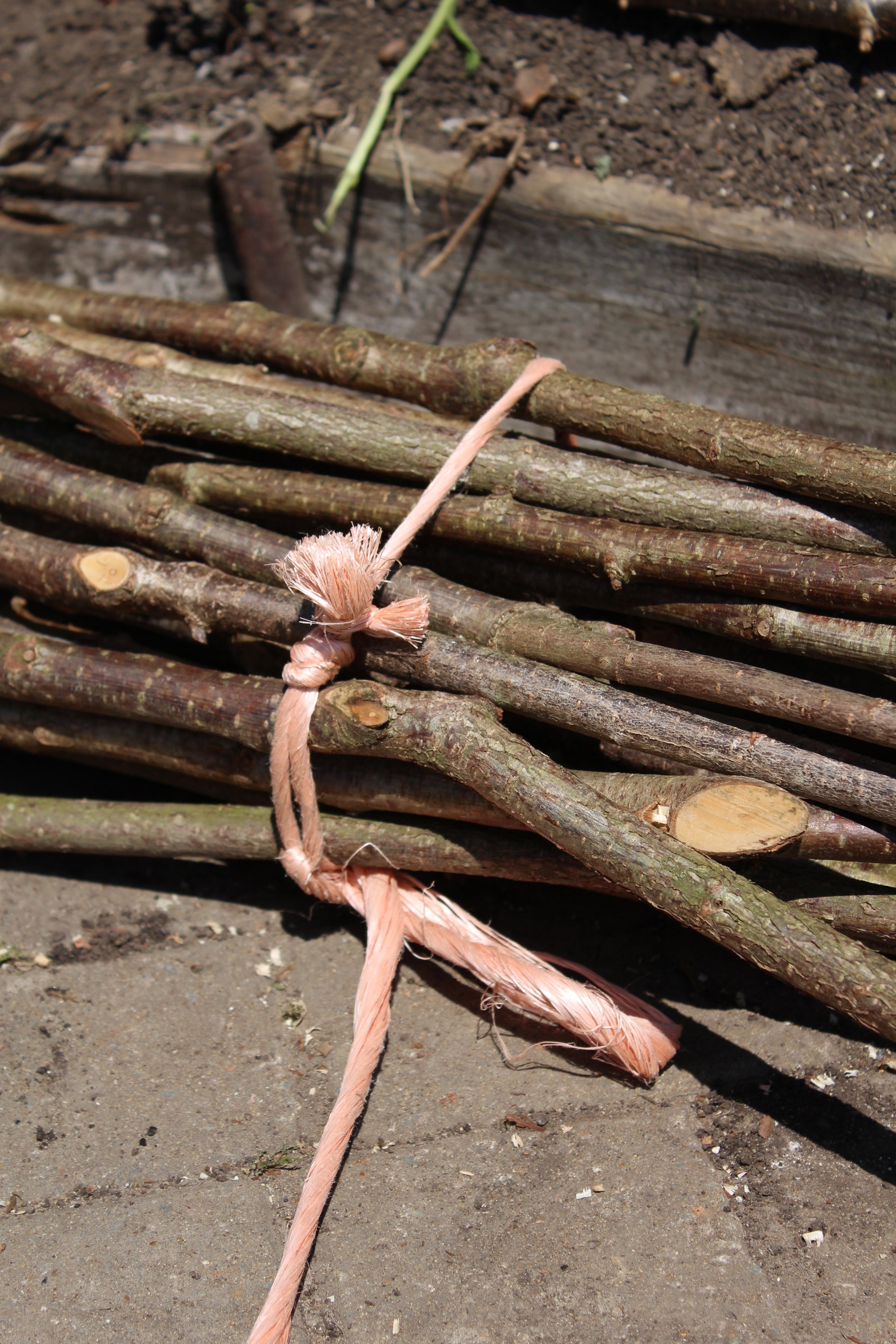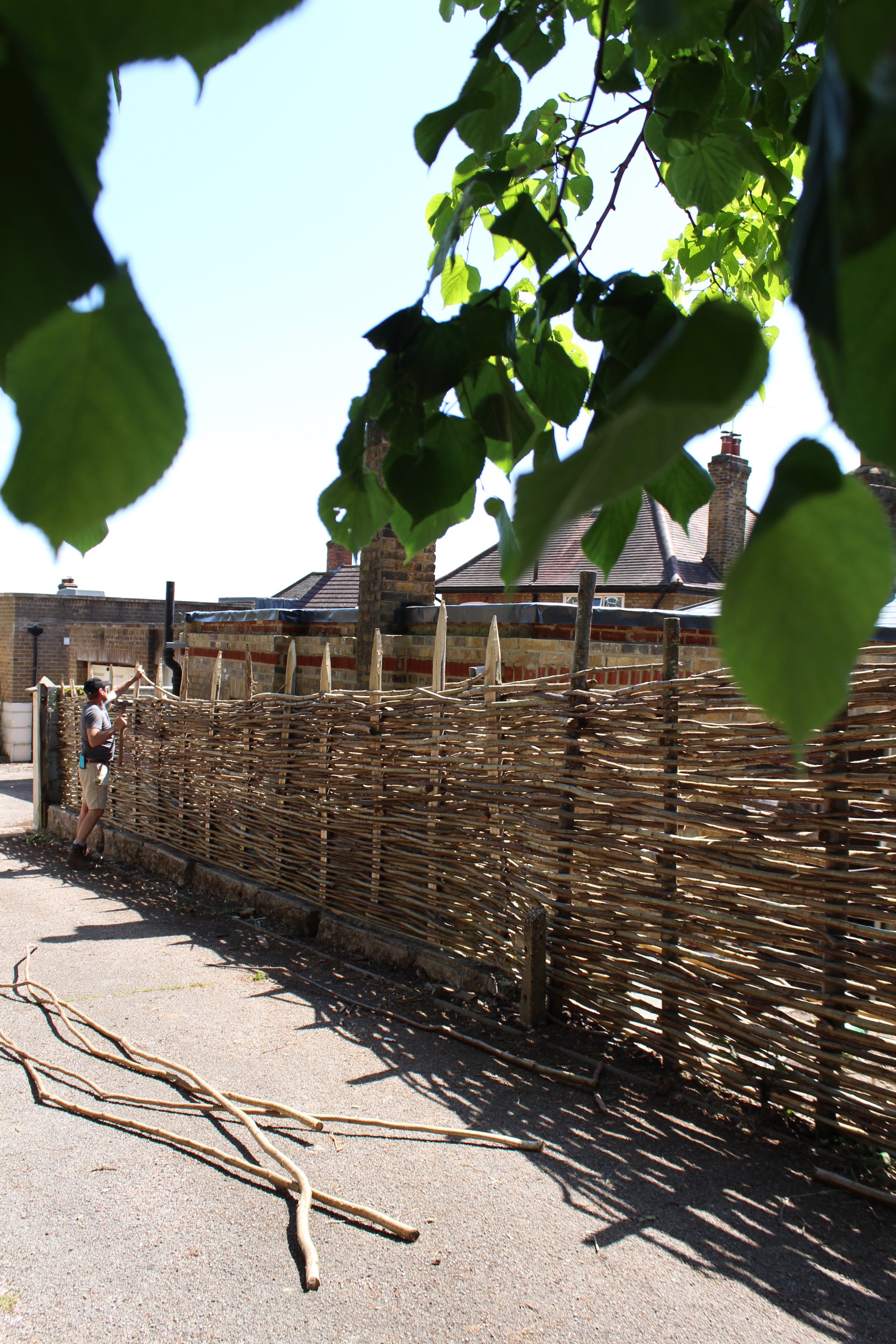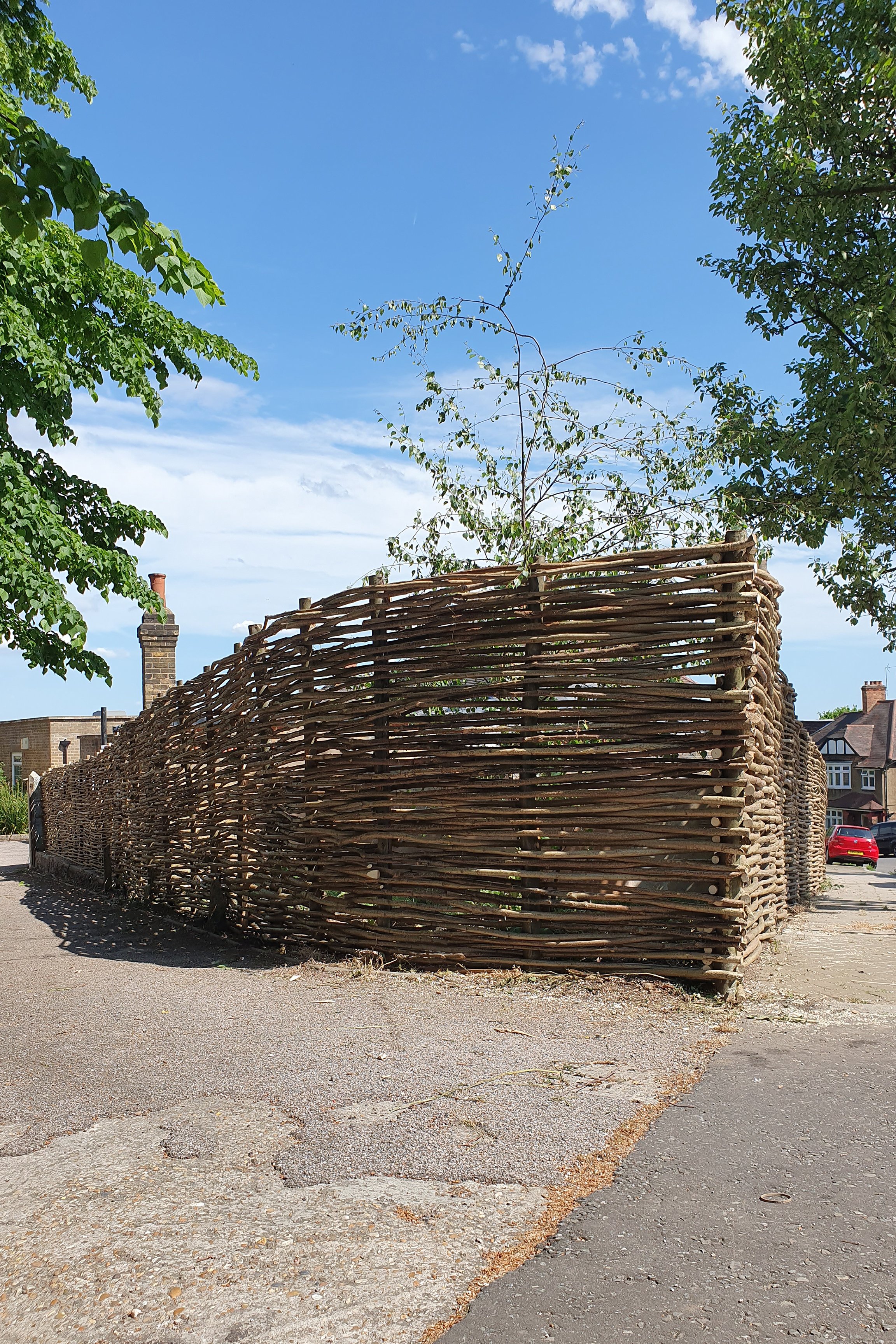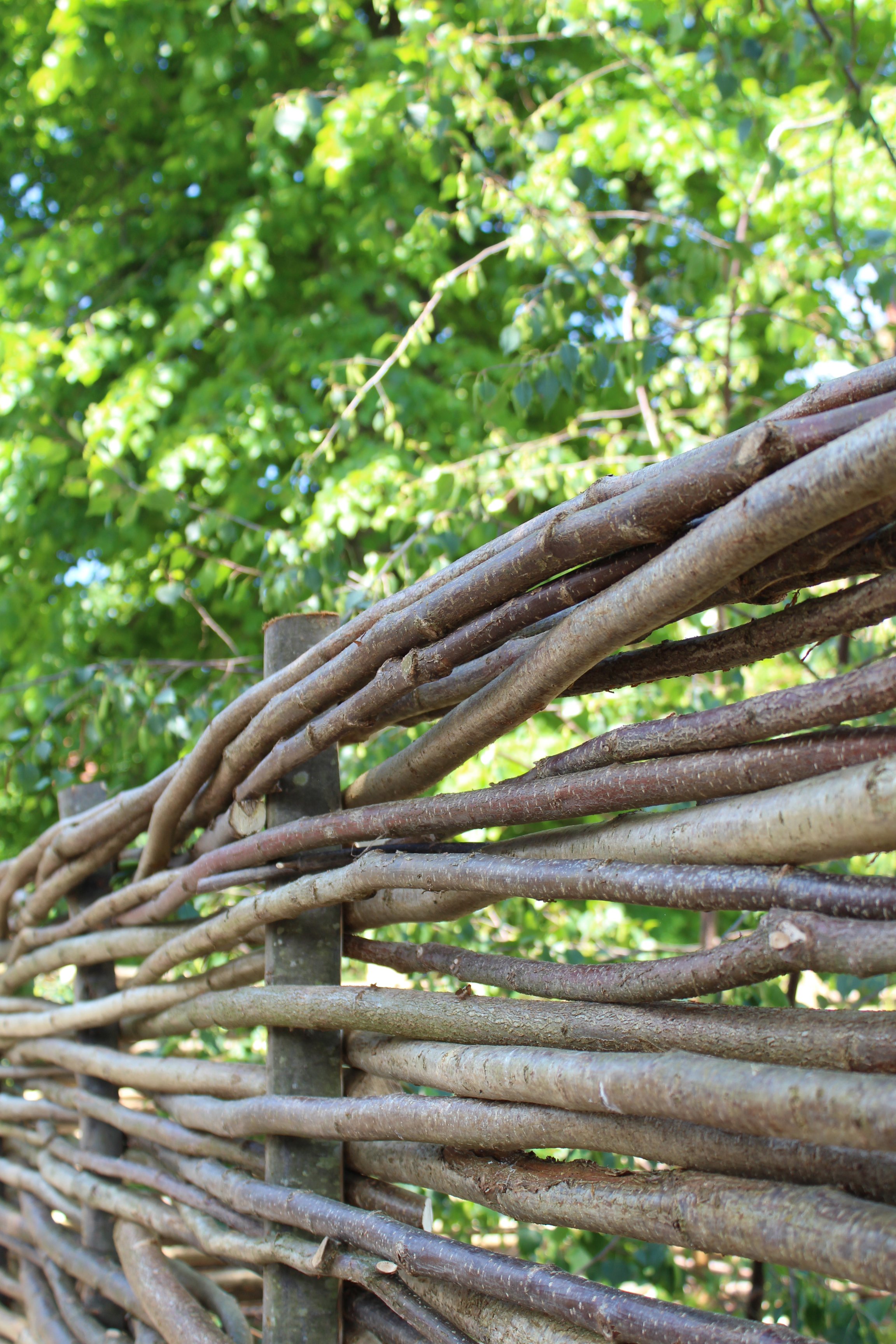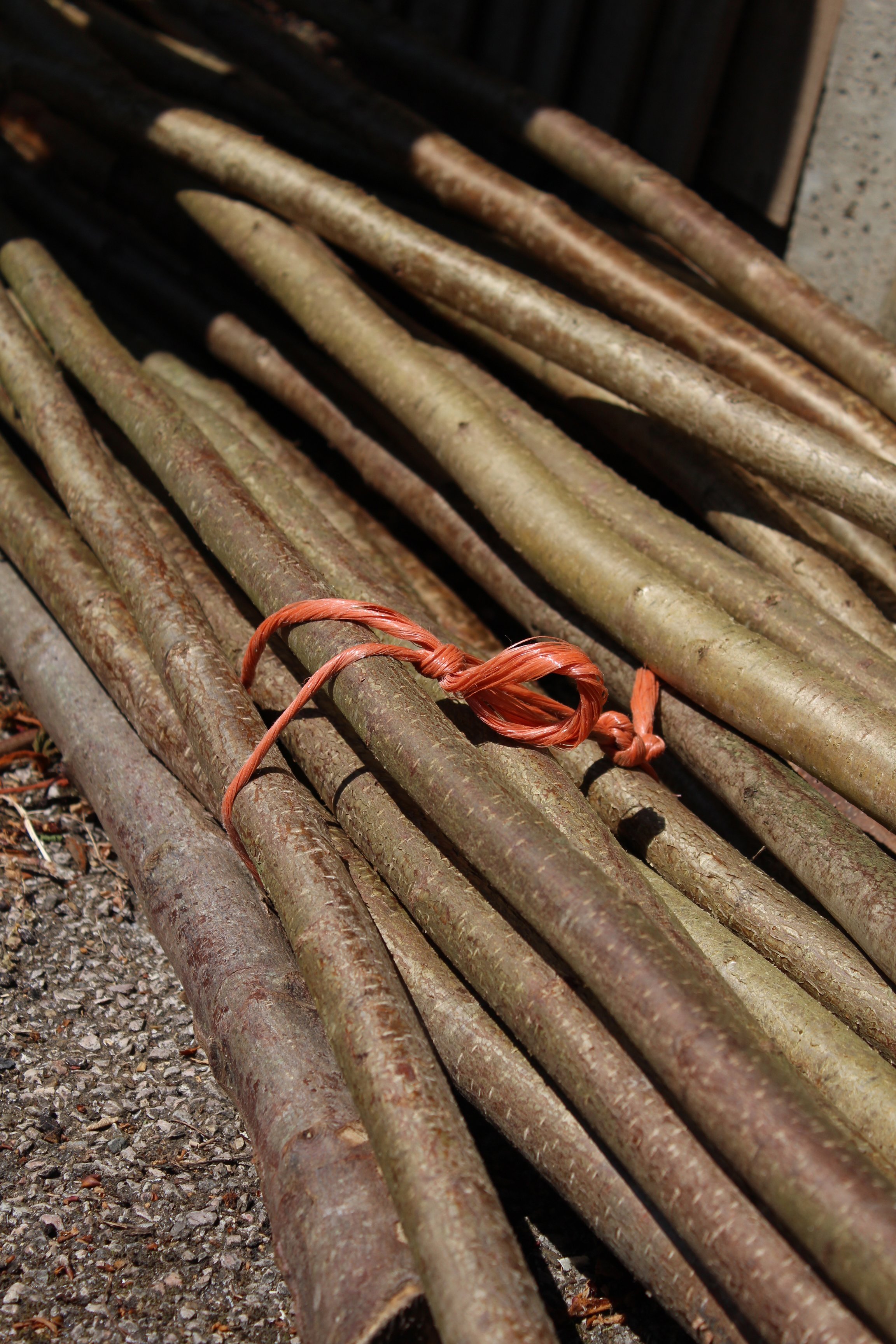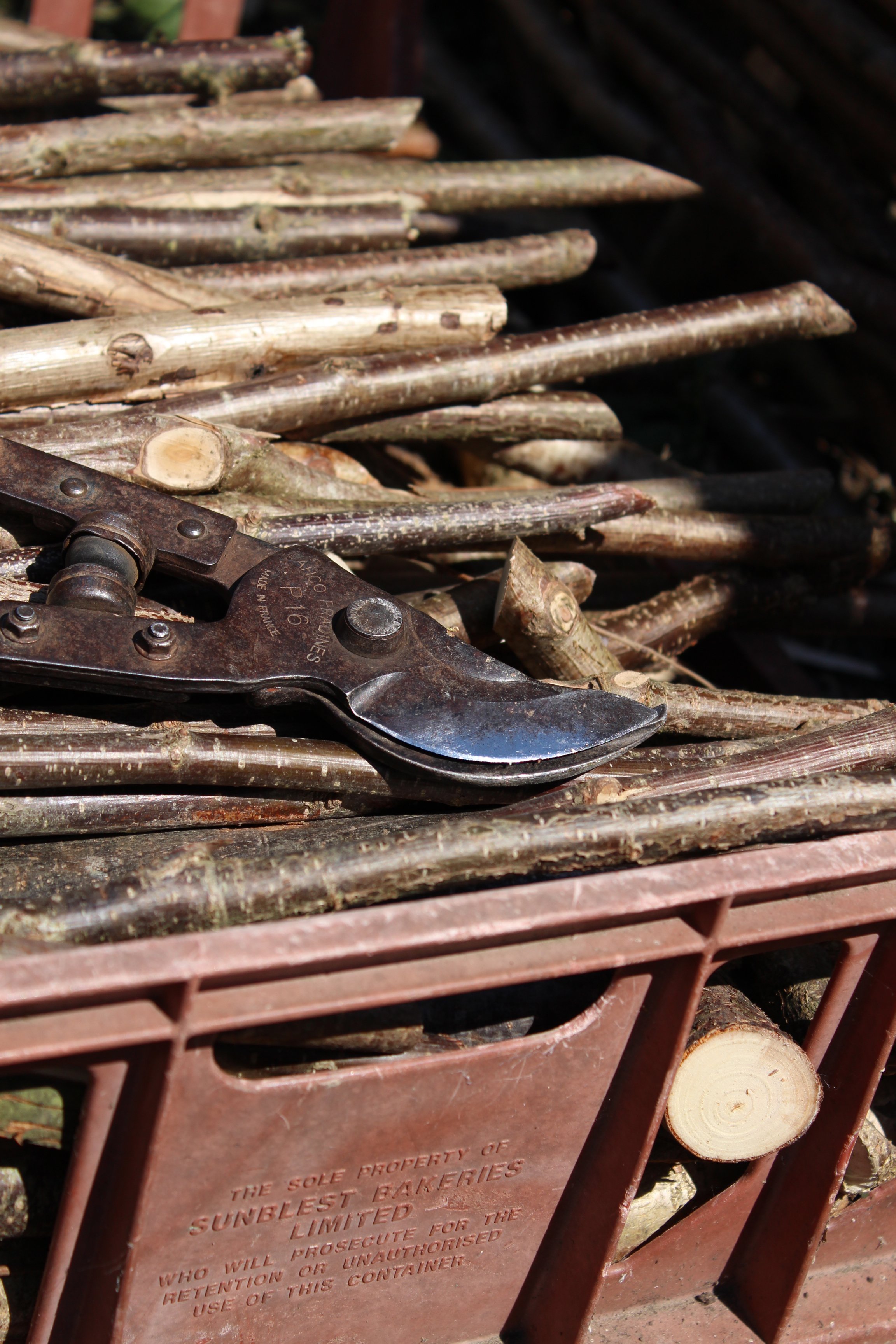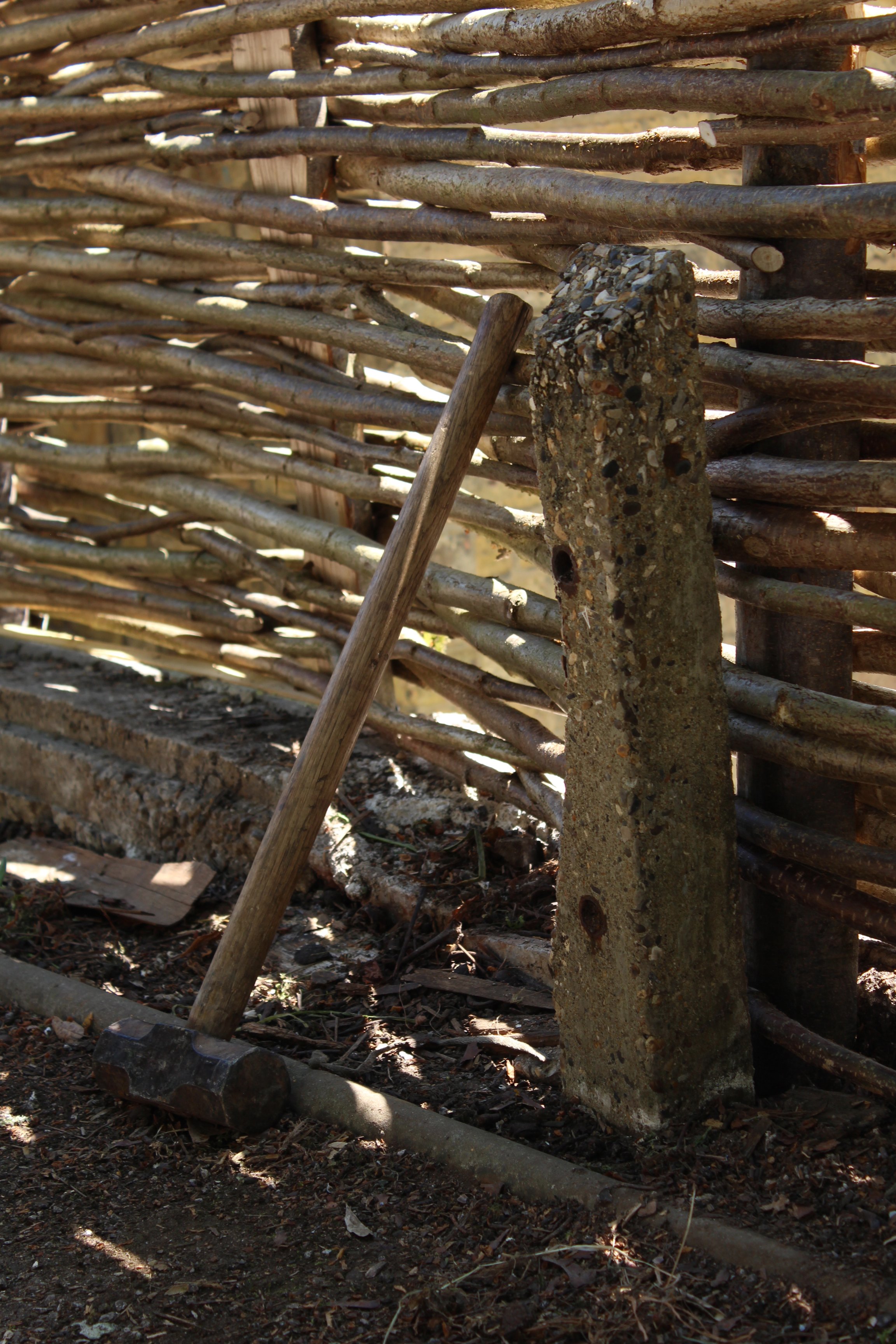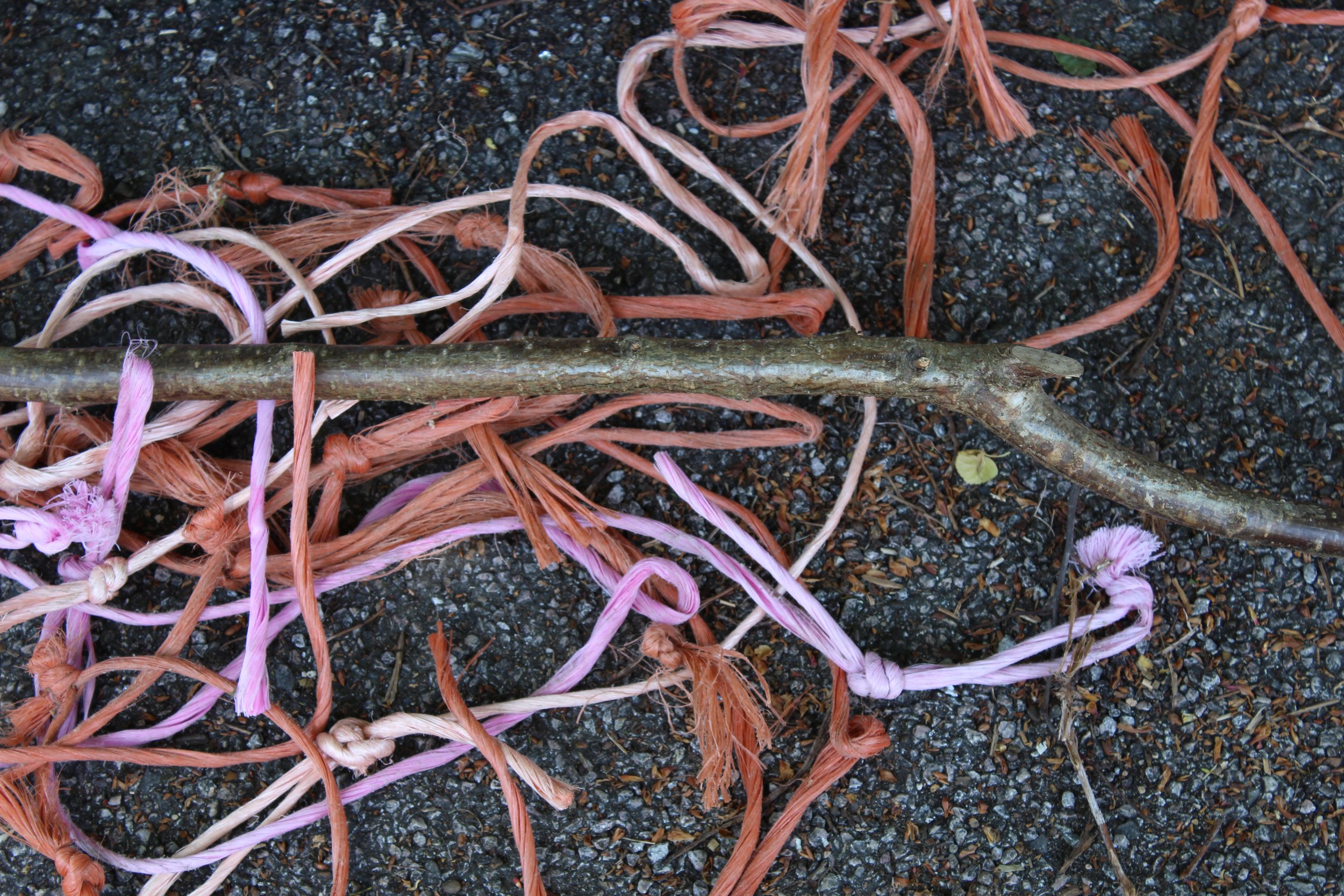Weaving with an Underwoodsman
The other day, Peter and I spent a glorious sunny few hours watching and learning while Underwoodsman John Waller and his team wove a hazel fence around the perimeter of our London garden.
John takes care of about thirty acres of coppiced woodland on the North Downs of Kent. He grows and harvests most of the timber he uses, sourcing the rest from nearby woods.
The fence is constructed with two different timber elements - the stakes, split in half along their length and sharpened like giant pencils, are hewn from sweet chestnut. These are driven into the ground, and form the ‘warp’ of the fence. The second element - what I might think of as the weft but in the trade are called ‘weavers’ – are made of young hazel shoots, coppiced last winter. Six months on they are still green and sappy - flexible enough to weave between the stakes
Above left are the bundles of coppiced hazel - in lengths of about 10 to 12 feet. The ‘butt end’ is about the width of my wrist, tapering slowly along the length to about the thickness of my thumb at the tip.
Our little house sits at the north-eastern end the Norwood Ridge. This line was once the great ‘North Wood’ - a rise of oak and coppiced woodland to the south of London. There is little left of the north wood now, save for a scattering of parks and the ghost of tree-capped hills and gardens that make South London look so green.
The ground around our garden rises over 4 yards along the length of the site. A woven fence like this can accommodate curves and slopes with an organic elegance - undulating to fit the space. Above on the left here you see the fence rising up the hill. And above right you see it at almost its full 6 feet height at the back of the house. You can just see John at the far end ‘finishing the line’.
Above right you see the top corner of our triangular plot with the fence rising like the prow of a boat.
And below left, you see the twisting top layer of the weave structure - the rope-like construction forming a finishing cap to the fence.
I find myself, as always, drawn to the tools and equipment. Here on the left below are a long-handled pair of loppers resting on a pile of ‘offcuts’ tidied away into a beautifully weathered Sunblest bread crate.
Below left is a metal-headed mallet, propped up in the shade against the now redundant old concrete fence posts.
All the faded old baler twine is gathered up at the end of the day for tying the next year’s bundles.
Fences and hurdles have been made in this way for thousands of years. This one will last ten good years and then the cycle begins again.
For more details about John Waller please see the link here.

